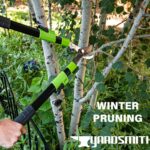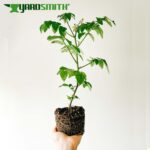
Pruning is a cultural practice that has many benefits. Pruning provides structural training to young trees, removes dead or unwanted materials, prolongs blooming, increases fruit production, and creates shape and order to our gardens.
During the pruning season, sharpen your tools frequently and clean after every use. This is especially important when pruning trees and other woody plants to prevent the spread of disease. Know the right time of year to prune. Dead head herbaceous plants all season long to prolong blooms. Prune flowering shrubs, trees and fruit trees right after blooming time. Prune non flowering trees in late winter before the buds swell. If you have a sap bleeding tree it is best to prune in summer. Examples of these trees include Birch, Maple, Elms, Walnut, Poplar and willow.



